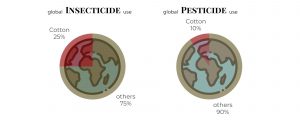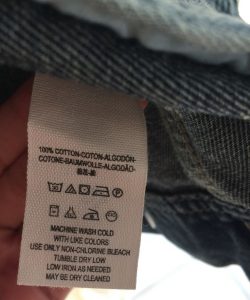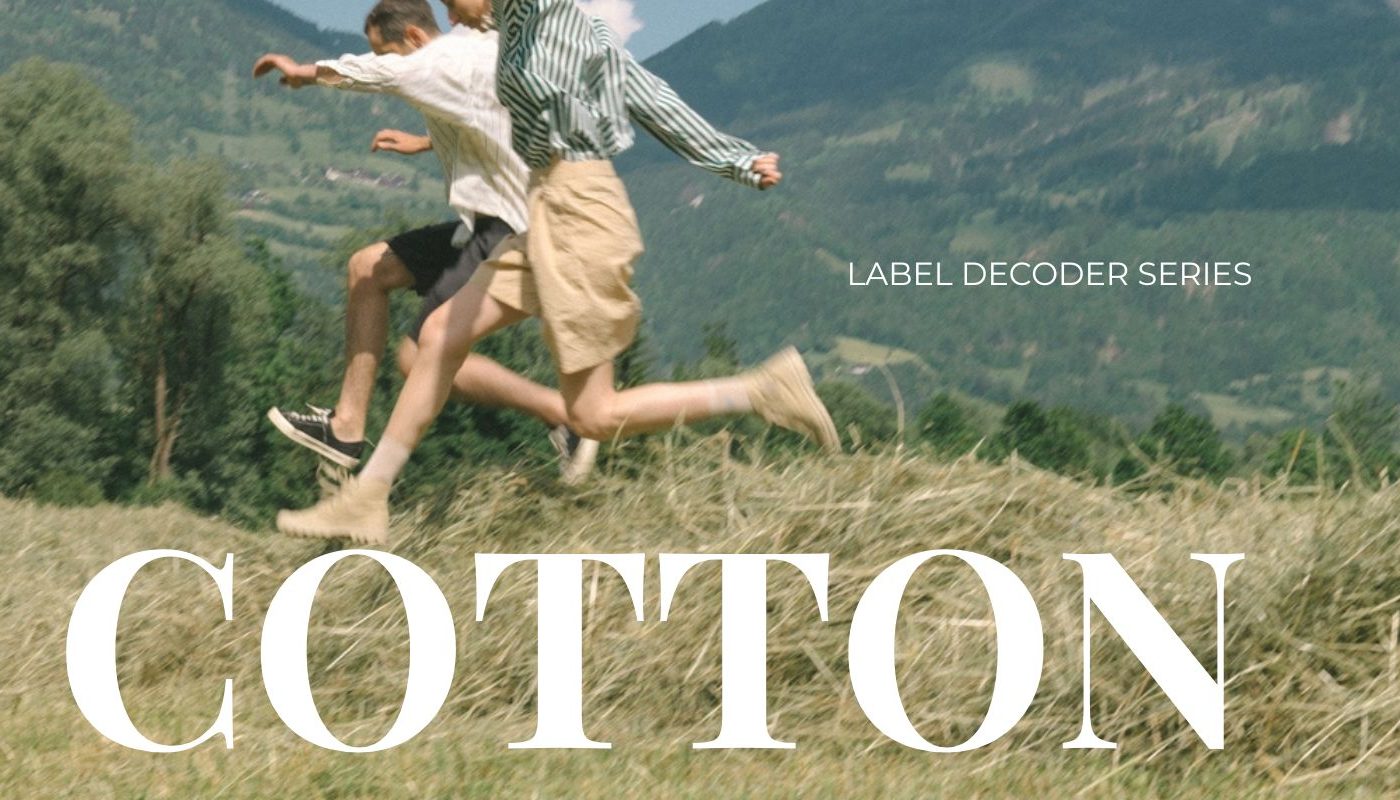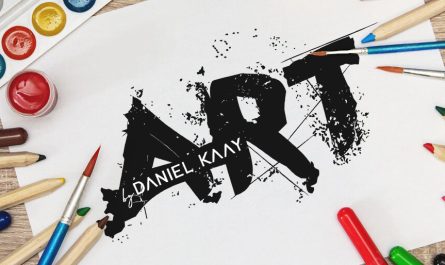Pause and look at what you’re wearing right now.

Is it cotton? There’s a high probability it is—cotton makes up around 24% of global fiber production, making it one of the most commonly used materials in clothing worldwide.
What does the label say? “100% cotton” sounds reassuring. But in reality, it only tells you what the fabric is—not how it was made, or who paid the price.
Let’s break down what’s hidden behind that tiny piece of fabric.
Conventional Cotton is Chemically Intense

Conventional cotton farming depends heavily on synthetic pesticides, insecticides, and fertilizers.
Why? Because cotton is highly vulnerable to pests—especially the bollworm, which can destroy entire crops. Unlike food crops, cotton isn’t eaten, so regulations around chemical use are often looser. Farmers often turn to aggressive chemical treatments to protect yields and maximize profits in large-scale monoculture systems, where pest outbreaks can spread rapidly.

But these numbers aren’t just abstract statistics—they have real-world consequences. When that much chemical is used on a single monoculture, it doesn’t stay confined to the fields. These substances spread into the air, soak into the soil, and flow into rivers and groundwater. The result? Serious health risks for the people working in or living near cotton farms, and long-term environmental damage that disrupts ecosystems far beyond the fields themselves.

Think about it: Would you still wear that T-shirt if you knew it was harming the farmer who grew it?
Conventional Conventional Is Thirsty
It’s easy to assume the water is just for growing the cotton plant—but that’s only part of the story. Here’s how water is used along the way:

So when we say “2,700 liters,” it’s not just about watering a plant. It’s the full journey from cotton seed to store shelf—and every step along the way soaks up water.

The Aral Sea in Central Asia was once the world’s fourth-largest lake. But in the 1960s, the rivers that fed it were diverted to irrigate cotton fields in desert regions. Within decades, the lake lost over 90% of its water. What’s left is a toxic dust bowl where wind now carries pesticide-laced dust into nearby towns. It’s a powerful reminder that cotton farming—if done irresponsibly—can drain entire ecosystems.

So next time you see “100% cotton” on a label, remember: it’s not just a T-shirt. It’s 18 bathtubs of water, and a chain of impact that reaches far beyond the fabric.
Conventional Cotton Is Genetically Modified
93% of cotton worldwide is GMO. Why?
To withstand more chemicals. To grow more, faster. To feed fast fashion.
But that comes at a cost:

Conventional Cotton Is Often Exploitative
Many cotton supply chains are built on unfair and even abusive labor. In Xinjiang, China, Uyghur Muslims have been forced to work in cotton fields under state surveillance. In Uzbekistan, child labor has been used for years during government-run harvests. And in many garment factories around the world, the people who sew our clothes still earn less than a living wage. The reality behind a cotton T-shirt is often far from fair.
Conventional vs. Organic Cotton
We’ve been told “organic cotton” is the answer. But what does that really mean?
| Feature | Conventional Cotton | Organic Cotton |
|---|---|---|
| Pesticides | Synthetic chemicals | None allowed |
| GMO Seeds | Yes (93% of global cotton) | Never allowed |
| Soil Health | Damaged by monoculture | Improved with rotation |
| Water Use | High irrigation needs | Often rain-fed |
| Farmer Exposure | High chemical exposure | Lower health risk |
| Verified Certification | Rare, unregulated | GOTS, Fairtrade required |
But Here’s the Shocking Truth:
Most people think cotton is a safe, natural choice. But in reality, only 1.4% of the world’s cotton is certified organic. That means nearly 98% of cotton is grown conventionally—using genetically modified seeds, synthetic pesticides, and huge amounts of water.

So why isn’t there more organic cotton?
Because growing it is harder. Organic cotton farmers can’t use synthetic pesticides or fertilizers. They have to rely on natural methods to keep bugs away and keep the soil healthy. That means more manual work, more care, and often less support from governments or big companies.
On top of that, for cotton to be officially “organic,” farmers need to get certified by trusted organizations like GOTS or Fairtrade. These certifications make sure the cotton really is grown responsibly—but the process takes time, money, and paperwork.
For big fashion brands focused on speed and profit, it’s often easier (and cheaper) to stick with conventional cotton—and call it “natural” anyway.
Trusted Cotton Certifications
So how do you shop better without needing a PhD in textiles?
Look for these trusted labels:

What You Can Do, Starting Now
You don’t need to be an expert to make better choices—just a bit more curious. Next time you’re about to buy something made of cotton, take a moment to pause and check:
Does the label say where the cotton comes from?
If it just says “100% cotton,” that’s not enough. Look for details—or ask the brand.
Does the brand explain how the cotton was grown?
Trustworthy companies are specific. If it just says “sustainable” without a certification like GOTS or Fairtrade, that might be greenwashing.
Can you find out who made the garment?
Some brands share info about their factories or working conditions. If there’s nothing, that’s a red flag.
Each question is a step toward better choices.

Next Up:
Stay tuned for my next post:
“Recycled Polyester: Hero or Hype?” – What turning plastic bottles into leggings really solves… and what it doesn’t.
Follow me on Instagram @labeldecoder for more updates
Visuals made by Midjourney and canva &
some images used in this project are licensed from Death to Stock. All visual content remains the property of the original creators and is used under license.




A great read that sheds light on the hidden truths behind cotton labels and encourages more mindful choices :))
Thank you! I hope it inspires some of us to overthink their choices when shopping :).